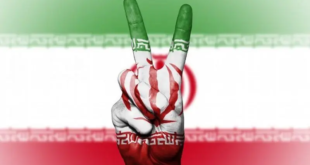GAZA CITY — Three months since Israel left the Gaza Strip, ambitious plans to develop the impoverished Palestinian territory have been stalled by delays over shifting the rubble of former settlements, officials say.
Israel withdrew from the territory on September 12 and handed the Gaza Strip over to the Palestinian Authority following a 38-year occupation, leaving behind mountains of debris from 21 flatted Jewish civilian enclaves. For years, around 8,000 settlers expropriated a quarter of the surface area of Gaza at the expense of 1.3 million Palestinians living in one of the most densely populated strips of land on earth.
In the euphoria of the pullout, Palestinian officials, bolstered by promises of three billion dollars in foreign aid, waxed lyrical about numerous construction projects to be built out of the ashes of the flatted settlements.
“No project has been carried out and nothing has changed in the areas evacuated by the settlers and army,” admitted Mohammed Samhuri, head of a technical team responsible for post-pullout projects.
Some roads, formerly reserved for Jewish settlers, have been reoponed and agricultural land rehabilitated, but mountains of masonry and twisted metal, the remains of some 1,200 settler houses, remain immovable until this day.
“Israel has not kept to its commitment to clear the rubble, which is an enormous obstacle to any development project,” said Samhuri.
Removing the thousands of tonnes should begin within a month now that a UN-Israeli agreement has been signed on funding, said one senior official from the UN Development Programme (UNDP) which is responsible for managing the operation.
“Assuming things go well, we then have the preliminary work, so the actual clean-up should begin within about a month,” said Timothy Rothermel.
“The reason nothing has been done [until now] is that we were negotiating with the Israeli government to reach a financial agreement,” he said.
“We have agreed. I think it will be concluded in a day or two on the Israeli side.”
Rothermel said the estimated cost of the clearance operation, which is expected to take around 12 months, would be just under $25 million.
The operation to first clear then recycle the rubble will be carried out by Palestinian contractors bidding for the tenders offered through the UNDP.
All non-recyclable material will be transferred to a third country of Israel’s choice, most probably the Sinai desert in Egypt.
“Most of the rubble is being recycled. It is mainly concrete and the main use of it would be as base coat for road rehabilitation and construction,” said Rothermel.
But even if no construction work has begun, the Palestinian Authority has restored 300 out of 400 hectares of greenhouses that were brought from the settlers for $14 million from private donors.
Two-hundred hectares of the greenhouses have been planted and the first harvest soon to be exported to Europe, said Basel Jaber, director of the Palestinian economic and development company operating the hothouses.
So far the greenhouses have provided jobs to nearly 4,000 Palestinian workers, most of whom worked for their original settler owners, Jaber said.
“Sabotage of the water distribution network (by settlers) and pillaging of the hothouses after the Israeli withdrawal caused damage which we had to repair. It was not an easy task,” he said.
 Eurasia Press & News
Eurasia Press & News



